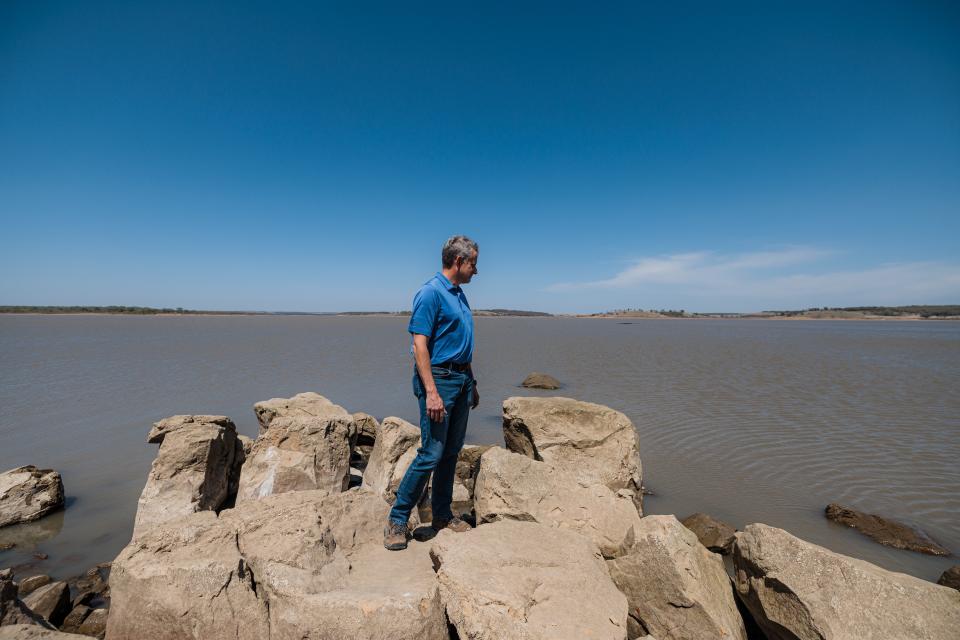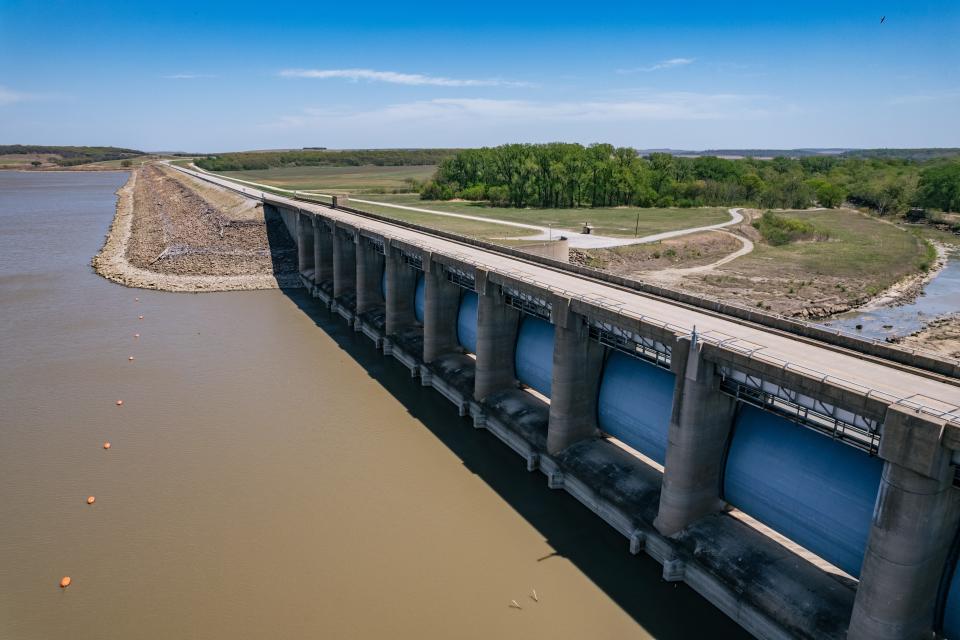Bartlesville's water supply is dwindling. Could Kaw Lake be the key to supplementing it?
Spanning from the Rocky Mountains to the plains of Oklahoma, Kaw Lake's watershed is more than 30 times larger than Bartlesville's current reservoirs combined and could meet the community's needs for the next 75 years.
The only problem is that it's approximately 50 miles away and the project could cost $150 million.
This is one of the eight options Water Utilities Director Terry Lauritsen presented to the 17 members of the Water Resource Committee earlier this month.

The Bartlesville City Council re-established the committee in July after the city struggled for months with a dwindling water supply amid drought conditions that reduced water levels in Copan and Hulah lakes.
The water resource committee held its first meeting after almost nine years to gather information and discuss possible solutions for the community's water security.
The committee's target is to secure an additional 10 to 16 million gallons a day (mgd) and possibly diversify where the water comes from to lessen the impact of localized droughts that Bartlesville is currently experiencing.
Options fall into a couple of categories — expand what we have, tap into another resource or buy potable water.
Rearranging capacity in existing reservoirs
Working with the U.S. Corps of Engineers, Bartlesville could pay for the right to reallocate 10% of either lake's flood control into water supply capacity. This would raise the elevation of the conservation pool and shrink the flood pool.
In layperson's terms, the Corps would hold more water back when rain fill the reservoirs. This wouldn't diversify the supply but would provide access to more potential water.
The cost to reallocate 10 mgd for Hulah would be $12.5 million. The current infrastructure at Hulah would be sufficient but there is a possibility of upgrading the pipeline and pump station for an additional $30 million.
Copan Lake's cost is significantly higher because the infrastructure would need to be built to access the additional water rights. The pumping station and pipeline would cost $40 million.
With the infrastructure investment, Bartlesville could purchase the remaining 2 mgd from the town of Copan and reallocate 10 mgd from Copan Lake for water rights, bringing the project's total cost to $70 million.

Kaw Lake
Located to the west of town with a massive watershed and 40 mgd available for purchase, some of Kaw Lake's water rights are being purchased by cities further away than Bartlesville.
Enid is constructing a 70-mile pipeline and a new water treatment plant after securing 10.5 mgd from Kaw Lake with a reported cost of over $250 million.
Kaw Lake sits on the Arkansas River and is fed by rains and snow melt from the Rocky Mountains. Lauritsen noted Kaw Lake refreshes in less than 10 days compared to Hulah's roughy 45-day refresh rate.
Bartlesville could purchase 14 mgd and construct a 50-mile pipeline to pump the raw water to the town's treatment plant for $150 million. Lauritsen noted the project could be upgraded to 18 mgd without a significant additional cost.
Birch Lake and Skiatook Lake
Located south of Bartlesville, Birch Lake and Skiatook Lake have 3 mgd and 5.5 mgd water rights available, respectively.
The price for the water rights hasn't been determined yet but the infrastructure to pump from Birch Lake would cost $55 million.
To access Skiatook, water would first be pumped into Birch Lake and then to Bartlesville, which would cost an additional $30 million.
Skiatook Lake's watershed is roughly half of Hulah's and Birch is less than 10% of Hulah's.
More: City announces public pools to remain closed unless water supply improves
Other options
Around 3 mgd of potable water could be purchased from Collinsville and Tulsa combined after constructing a $50 million pipeline running north to the Hot-Warm-Cold water towers.
Sand Creek could be converted to Sand Lake. This option was explored years ago and could provide 12 mgd for $130 million. Still, its small watershed would butt up against the current ones and the cost could be significantly higher after considering the new dam's environmental and archaeological impact.
Many don't know this but Bartlesville sits next to the mostly unexplored Ada-Vamoosa Aquifer. To explore this option, Lauritsen believes around $100k for a well study would need to take place to test the viability and cost of the project.
"The committee at this point will tag their tops 3-4 ones that they would like us to really dive in and investigate," Lauritsen said. "Then we can determine the feasibility, the cost and then the timeline of how quickly we can access that water."
More: Bartlesville residents urged to conserve water as shortage worsens
Committee member and City Council member Billie Roane didn't say which option she thought was best but did have criteria for narrowing the choices down.
"It's going to take some time to gather all the information that we need to make sure we have a really good sound basis for our decision and for our dollars," said Roane. "I think there's more than one option and we need to be very, very wise with the dollars we invest and what is going to be our best return on investment."
She said the committee had a tough job ahead but praised the wisdom of those on the committee.
"There are some very experienced, very wise people and great legislators serving on this particular mission," Roane said. "We will figure it out."
The next committee meeting will open to the public at 1:30 p.m. Thursday, Sept. 14, at Bartlesville City Hall.
This article originally appeared on Bartlesville Examiner-Enterprise: Here's how Kaw Lake could solve Bartlesville water woes

